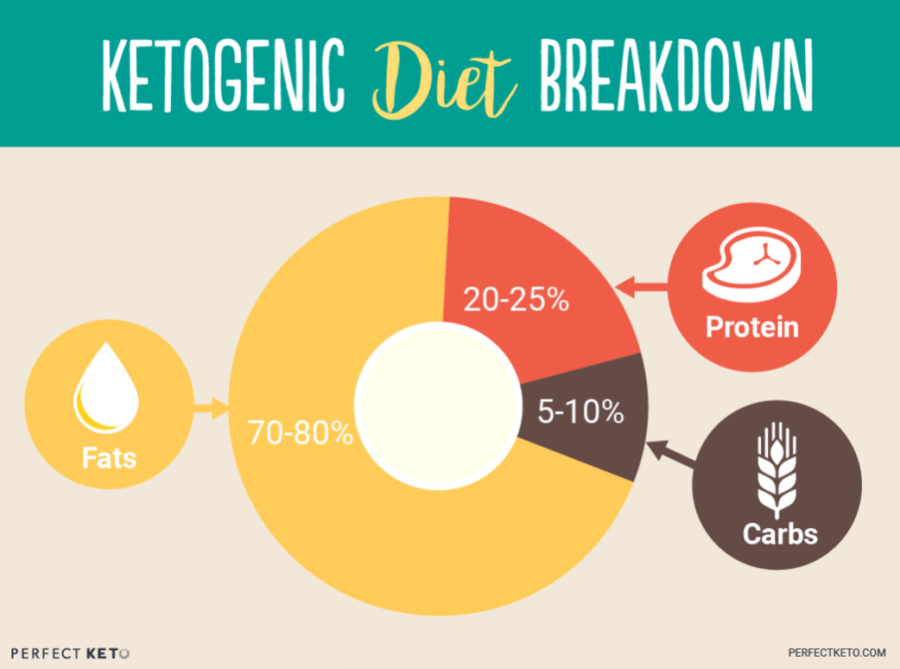Target Carbs for Keto Diet
- How Many Carbs on Keto Should You Have?
- Targeted Ketogenic Diet and Carb Intake
- Carb Foods to Eat on the Keto Diet
- Testing Ketone Levels
To enter ketosis, you need the right ratio of carbohydrates, fats, and protein. Which leads to a common question: Just how many carbs on keto should you eat?

GET RESULTS IN 30 DAYS
Join 90k+ people who are losing weight with Keto Kickstart, our doctor-developed program designed to give you real weight loss results.
You're in! Check your email to get started with the program.
In a Standard American Diet (SAD), you might eat between 100-150 carbs per day and still be considered low-carb. Unfortunately, this won't transition your body into a fat-burning state of ketosis. On the keto diet, your carb count will be far lower, often between 25-50 grams of carbs per day.
Below, you'll learn how many carbs on keto most people consume, why your macro goals may vary, and how to calculate your carb, protein, and fat intake. You'll also learn some healthy sources of carbs to consider for your keto diet.
How Many Carbs on Keto Should You Have?
The keto diet is a low-carb, high-fat diet. The goal on keto is to enter a metabolic state known as ketosis, where you burn ketone bodies — rather than glucose — as your primary energy source.
On the keto diet, most people consume 70-75% of their daily calories from fat, 20-25% of calories from protein, and just 5-10% of calories from net carbs. That's a ballpark range — your individual macronutrient goals will vary depending upon your age, body composition, activity level, and any fat loss goals you may have.

How to Calculate Your Carb Intake
To understand your daily carb allotment, take the above percentages and translate them into grams (something far more useful when scanning those nutrition labels).
For example, if you're consuming 2,000 calories per day and aim to get just 10% of your calories from carbs, you'll multiply 2,000 by .10, to get 200 calories per day. Since one gram of carbs is equal to four calories, you'll then take 200 divided by 4, to get 50 grams of net carbs per day[ * ].
How to Calculate Your Protein Intake
Protein is very beneficial to your body, providing amino acids to help gain muscle mass and burn body fat[ * ]. On keto, roughly 20-25% of your calories will come from protein. While you may need more protein if you're an extremely active person, too much protein may cause gluconeogenesis.
Depending on activity level, most people consume between .6–1.0 grams of protein per pound of lean body mass. For example, a female may weigh 150 lbs, but have just 112.5 pounds of lean body mass. For her, 90–112.5 grams of protein per day would be suitable.
How to Calculate Your Fat Intake
One of the main mistakes on keto is not eating enough fat. For the longest time, nutritionists declared that fat — particularly saturated fat — was bad, which lead to the low-fat craze of the 1980s and 1990s. However, this science has since been debunked, lacking any significant data showing a connection between a high-fat diet and an increased risk in heart disease[ * ].
After you calculate your protein and total carbs, your remaining calories of the day will come from fat sources. As stated earlier, this is typically 70-75% of your total calories of the day.
Take the keto quiz
Find the right keto snacks & supplements
for your unique goals
Take quiz
To give you an idea, 70% of 2,000 calories is 1,400 calories. If you divide 1,400 by 9 (since one gram of fat equals 9 calories), you get 155.56 grams of fat per day.
Keto Macro Calculator: Know Exactly How Many Carbs on Keto You Should Eat
Admittedly, these percentages alone aren't the best guide. Your macro guidelines will vary depending on your body type and weight loss goals.
To calculate your individual macro needs, use the Perfect Keto Calculator . This keto calculator takes a number of variables into account, including weight, gender, height, activity level, BMR, and body fat percentage.

GET RESULTS IN 30 DAYS
Join 90k+ people who are losing weight with Keto Kickstart, our doctor-developed program designed to give you real weight loss results.
You're in! Check your email to get started with the program.
Targeted Ketogenic Diet and Carb Intake
If you engage in regular, intense physical activity, note that the above ratios might not cater to your performance needs. That's where targeted ketogenic diets come into play.
In targeted keto — and during training times only — you might want to integrate a carb "boost" before and immediately following your training sessions. This will ensure your muscles have enough glycogen to perform their necessary tasks, both during competition and within in-season training.
When adopting this targeted principle , you'll follow the above macro guidelines throughout the day. However, after you leave the gym (or training site), you'll consume 15-30 grams of fast-acting carbohydrates. These should be consumed within a half hour after training ends.
Theoretically, your body uses these carbs immediately to repair and restore itself. Therefore, your ketogenic state won't be adversely affected.
Carb Foods to Eat on the Keto Diet
On a keto meal plan, you'll fuel up on plenty of healthy fats and high-quality protein sources. You'll get the bulk of your calories from foods like olive oil, coconut oil, avocados, and MCT oil, and you'll get protein from both plant-based and animal sources.
When it comes to carbs, you'll want to keep your blood sugar levels in check by consuming foods that rank low on the glycemic index[ * ]. The glycemic index ranks foods 0-100, where higher numbers cause a higher spike in insulin levels. Avoid high-carb grains, starchy vegetables, and high-sugar fruits, instead building your diet on keto foods such as:
- Green leafy veggies, including kale, lettuce, asparagus, and arugula
- Low-sugar berries, including blueberries, strawberries, and raspberries
- Cruciferous vegetables, including cabbage, cauliflower, Brussels sprouts, and broccoli
On a low-carb diet, you'll also want to avoid all sugar, including soda, candy, baked goods, and even sugar alcohols. If you're craving something sweet, use a keto-friendly sweetener , such as stevia, Swerve, monk fruit, or erythritol.
Testing Ketone Levels
The best way to know your how many carbs on keto you should consume is to test your blood ketone levels. Check out this guide for testing ketone levels to learn more.
While the Perfect Keto Macro Calculator is an incredibly accurate estimate, it's still an estimate. Remember: The goal of the keto diet is to enter ketosis.
Even if you're losing body weight, feeling great, and seeing improvements in your body composition, there's a chance you might not be in ketosis. The only way to know if your current diet is reaching your goals is to test your ketone levels.
How Many Carbs on Keto Varies From Person to Person
On a ketogenic diet, your goal is to enter the fat-burning state known as ketosis. To do this, you'll eat a high-fat, low-carbohydrate diet, where your daily carb intake hovers between 25-50 grams.
That said, carb consumption will vary from person to person. Depending on genetics, body composition, and exercise routine, your carb intake may be higher or lower than the average.
To get an accurate estimate of your individual macro guidelines, you can either use the Perfect Keto Macro Calculator or continuously test your ketone levels.
Now that you how many carbs on keto you should consume based on your calorie intake, the rest is up to you. View the Perfect Keto recipe library for plenty of low-carb recipe ideas, tips, and tricks to help you enter (and stay in) ketosis.

GET RESULTS IN 30 DAYS
Join 90k+ people who are losing weight with Keto Kickstart, our doctor-developed program designed to give you real weight loss results.
You're in! Check your email to get started with the program.
Source: https://perfectketo.com/how-many-carbs-on-keto/